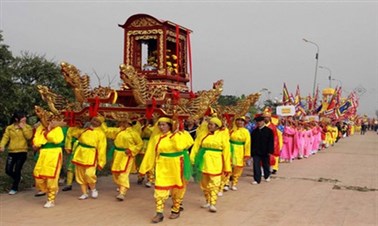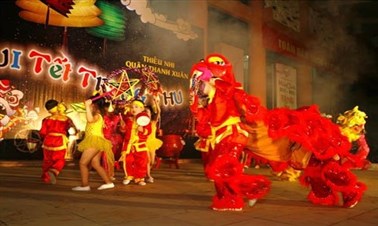Life in the rural villages of Vietnam has changed little for generations. What has changed is that some of the towns and cities in the country have grown, partly because of people moving to urban areas from the countryside. While there are jobs and opportunities in the cities, tradition still plays a very important part of life. On special occasions, like Vietnamese New Year (Tet), the family needs to be together, often three generations who gather in the family home to celebrate. If you have a Vietnam tour package at this time of the year, you may see more people travelling than niormal.

New Year is defined by the lunar calendar so the date changes slightly each year but it is an identifiable date decades ahead. It occurs during the last ten days of January or the first twenty of February each year between the winter solstice and the spring equinox. There will be many people on the move back to their villages each year to start the celebration. If you are on a Vietnam tour with kids at this time you will see how the locals celebrate.
There are several customs involved in Vietnam’s New Year:
• The Home. Everyone in the family is involved in cleaning and decorating the house, even the children. Their job is to sweep and scrub the floor. The altar needs a thorough cleaning as well as the kitchen. It is the family’s way of getting rid of any bad fortune that has occurred during the previous year. A family may paint and decorate the house as well.
• New Clothes. Children get very excited because their parents will buy them new clothes and shoes before New Year arrives but they are not allowed to wear then until the first day of the New Year celebration.
• Farewell. Seven days before Tet, each family holds a farewell ceremony for the Kitchen God (Ong Tao) who will be going to Heaven to report on the family’s affairs over the last year.
• New Year’s Eve. Tradition in Vietnam talks of 12 Sacred Animals and on New Year’s Eve, one of those animals hands over power to another while the Kitchen God returns and the family has a ceremony to welcome him back.
• Aura. The first guest entering the home is very important once New Year arrives. It must be someone of good reputation who will bring good luck for the coming year.
• Flowers. Yellow and pink are lucky colours. Apricot and peach blossom, the former in the south, the latter the north are an essential part of New Year.
• Lucky Money in a red envelope. Younger members of the family are given envelopes while those giving the envelopes can expect good fortune because of their actions.
• Ancestors. Offering to ancestors of food and wine are made and incense burnt as ancestors are invited to celebrate with the family.
• Banh Chung. It is a sticky rice cake with pork and beans. It is wrapped in a large leaf and tied with bamboo string, square in shape and offered to the ancestors. These cakes take a good deal of time to make, though these days some families actually buy them already made. If you are on a Vietnam private tour you will see them in the shops.





























